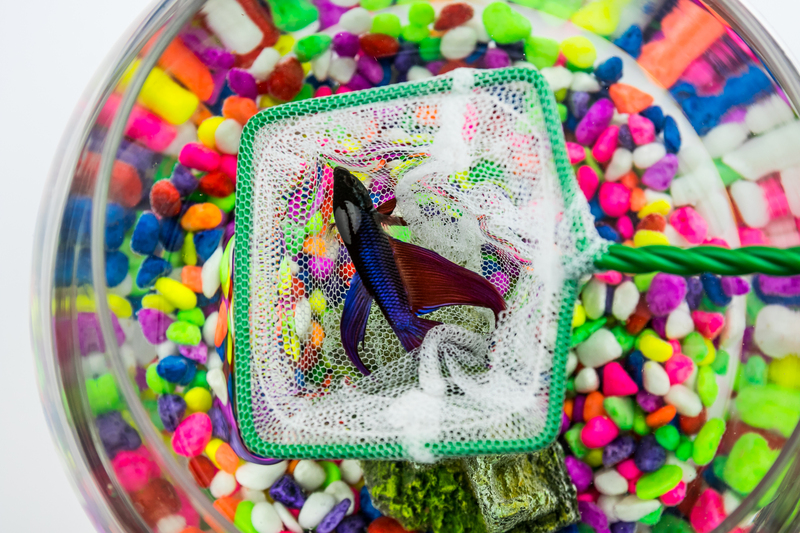Guidelines for Packing Your Kitchen Properly
Posted on 23/10/2024
Moving homes can be an exhilarating yet daunting experience. Among all the rooms in your house, the kitchen is arguably the most complex to pack, owing to the variety of items it holds--from perishable foods to fragile dishes and bulky appliances. To ensure a smooth transition and safeguard your belongings, it's essential to pack your kitchen properly. This comprehensive guide will walk you through the critical steps, making the process as streamlined and stress-free as possible.
1. Prepare and Plan
Before diving into the packing process, take some time to prepare and plan. Proper organization will save you both time and headaches in the long run.
Create a Timeline
A good starting point is to establish a timeline. How much time do you have before moving day? Segment your tasks into manageable sections, dedicating specific days to specific categories within your kitchen.
Gather Supplies
Having the right packing supplies is essential. Make sure you have plenty of:
- Sturdy boxes of various sizes
- Bubble wrap and packing paper
- Dish pack inserts for fragile items
- Plastic wrap and zip-lock bags for food storage
- Labeling supplies such as markers and stickers
- Tape and scissors

2. Declutter and Sort
You'll be surprised at how much easier packing becomes when you get rid of unnecessary items.
Inventory List
Create an inventory list to track what you own. It's the perfect opportunity to discard or donate items you no longer need.
Perishables and Non-Perishables
Sort your items into perishables and non-perishables. For perishables, plan meals to consume whatever you can before moving day. This reduces waste and the number of items you need to pack and transport.
3. Start with Non-Essentials
Once you've sorted and decluttered, start packing the non-essential items first. These are items you can live without for a week or two.
Cookware
Pack your specialized cookware and bakeware that you don't use on a daily basis. Wrap each item in bubble wrap and place it in a sturdy box.
Small Appliances
Small appliances like mixers, blenders, and coffee makers should be cleaned thoroughly and packed in their original boxes if possible. If not, use a strong box with plenty of padding.
4. Handle Fragile Items with Care
Fragile items require extra attention to prevent damage during transportation.
Glassware and Fine China
Use dish pack inserts to keep glasses and fine china secure. Each item should be individually wrapped in packing paper or bubble wrap. Place heavier items at the bottom and lighter ones on top.
Plates
Layer plates with packing paper or use dish pack dividers. Stand them on their sides rather than stacking them flat, as this distributes pressure more evenly.
5. Pack Appliances
Larger kitchen appliances like refrigerators and microwaves should be prepared carefully.
Defrost and Clean
Defrost your refrigerator and freezer at least 24 hours before moving. Clean and dry thoroughly to prevent mold or unpleasant odors.
Secure Components
Remove and pack loose components like shelves and drawers separately. Use tape to secure doors and cords to avoid any movement during transit.
6. Food Items and Essential Supplies
Packing food items needs a separate strategy altogether.
Dry Goods
Dry goods such as pasta, rice, and cereals should be packed in airtight containers or sturdy zip-lock bags. Consolidate partially-used packages to minimize the number of containers.
Spices and Condiments
Spices and condiments can be packed in small boxes or containers. Tape the lids securely to prevent spills. You might want to pack a few essential spices separately for immediate use when you arrive at your new home.
Essentials Box
Pack a box with essential items you'll need immediately upon arrival. This could include basic utensils, a pot or pan, dish soap, paper towels, and some non-perishable snacks. Label this box clearly and transport it in your car if possible.
7. Label and Seal
Finally, labeling your boxes will make unpacking more manageable and less chaotic.
Label Boxes Clearly
Mark each box with its contents and the room it belongs to. Use color-coded labels or stickers for quick identification.
Seal Securely
Use strong packing tape to seal boxes securely. Double-check to ensure all boxes are sealed and nothing is left unprotected.

8. Special Tips and Tricks
Here are some additional tips to make your kitchen packing even more efficient:
Utilize Towels and Linens
Use kitchen towels, dishcloths, and even bath linens to wrap fragile items. This conserves packing materials and adds an extra layer of protection.
Nested Packing
Nest smaller items inside larger ones to save space and provide added padding.
Conclusion
Packing your kitchen properly requires careful planning, the right supplies, and a methodical approach. By organizing, sorting, and taking extra care with fragile and essential items, you can make the process smoother and less stressful. Whether you're moving across the street or across the country, these guidelines will help protect your kitchen belongings and set you up for a seamless transition into your new home. Happy moving!







